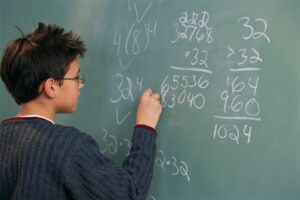Only in the first half of the 20th century did mankind realize the damage it was doing to the environment and to human existence as well. The intensity of the extinction of the animal world led to the study of the number of populations of different s

pecies, their intraspecific and interspecific competition with each other.
Since ancient times mankind has been trying
to predict the behavior of nature, this task cannot be solved without the use of mathematical methods including go math 5 grade. In ecology, the method of mathematical modeling is widespread as a means of studying and predicting natural processes.
Thanks to research and calculations, it is possible to predict changes in ecological systems. There is great interest in the coexistence of two or more biological species (populations) in a closed ecological system. These models are called “predator-prey” or Lotka-Volterra model. Mathematical ecology began with the study of this model.
Using mathematical modeling including go math sixth grade scientists can predict changes in a closed ecosystem, its basic properties, its interaction with the environment, and how to influence changes in the populations of individual species. To do this, the mutual influence of the numbers of different species, as well as the intraspecific competition of individuals with each other, are taken into account. The description of such population dynamics is used in complex systems. Multi-dimensional population dynamics models are used to model such systems.
Every year, hunting farms issue licenses to shoot animals, and fish farms release fry raised in artificial conditions. To issue the right number of such documents or to plan the breeding of fry, it is necessary to know the dynamics of interacting populations. With the help of a mathematical model it is possible to predict the dynamics and assess the controlling effects on the ecosystem. To date, this task is relevant, widely studied, researched, and contributes to controlling populations in nature.
The essence of mathematical modeling is that a complex, artificial system is built using mathematical abstractions.
This system reflects real processes and is based on information about animal behavior, numbers, habits, and food intake. It also makes it possible to predict in detail the behavior of the system, and not to allow any population in the study area to disappear.
Thus, it is possible to predict the response of a system to the action of specific factors only through a complex analysis of the quantitative relationships and regularities existing in it.